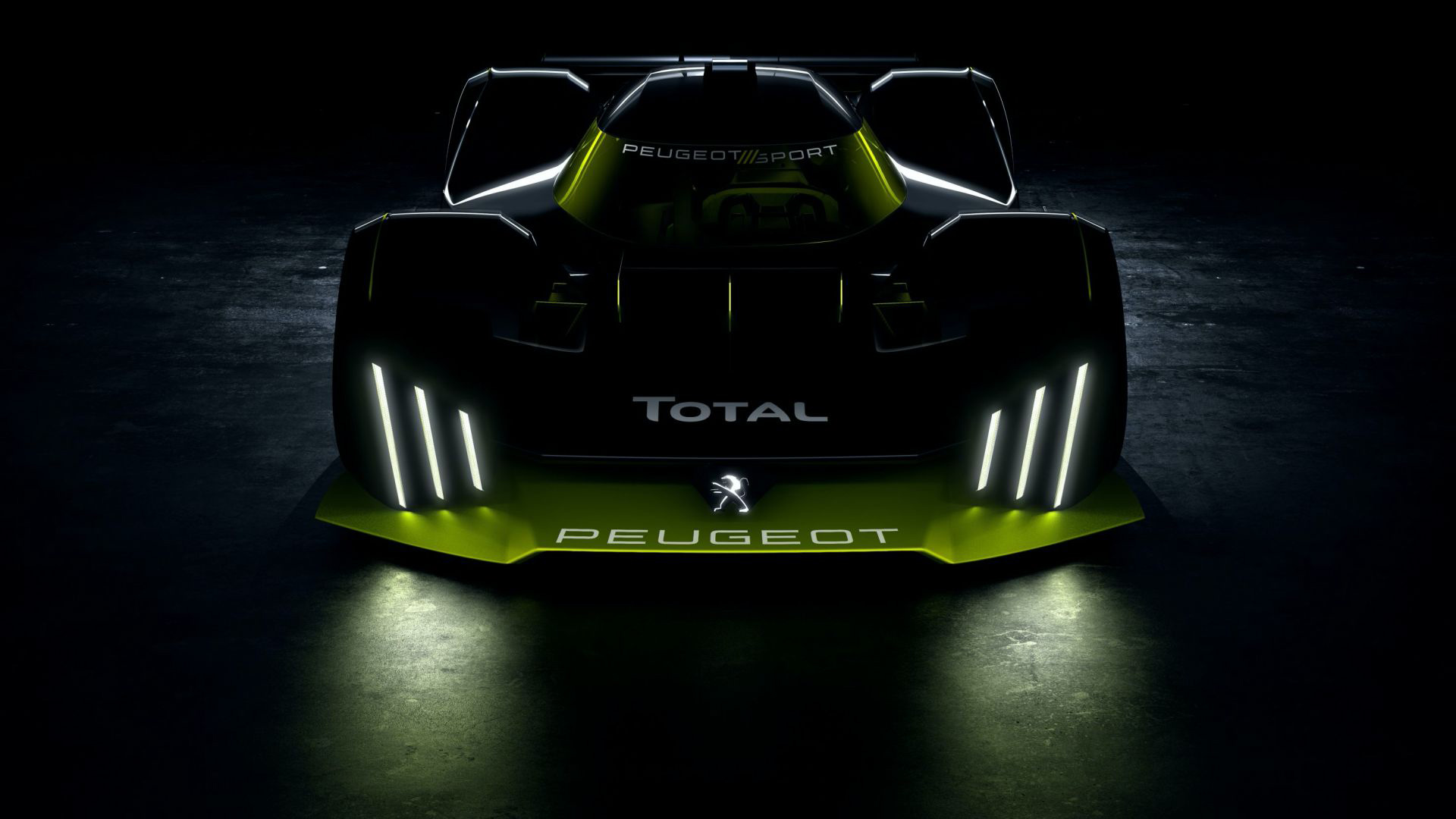

While Renault remains committed to its F1 program and Nürburgring-thrashing production hatchbacks, Peugeot is back to top-level endurance racing. As a five-time WRC, seven-time Dakar and triple Le Mans champion brand, Peugeot Sport will be back to the 24-hour race in France, as well as the rest of the World Endurance Championship with its upcoming LMH-class car now being developed with Peugeot’s partners Total, and its subsidiary Saft.
The Peugeot Hybrid4 500KW is going to be a four-wheel-drive electrified race car powered by the combination of a PSA Motorsport-developed 2.6-liter twin-turbo V6 engine sending as much as 680 horsepower to the rear axle, and a 200-kilowatt electric motor at the front. They’ll be connected via a four-wheel-drive system with a sequential seven-speed gearbox, all electrified by a high-power-density battery pack that will be efficient thanks to a smart powertrain and energy flow management system.




The new V6 weighs 363 pounds with its pair of turbos, and while it can produce 680 horsepower, once the electric motor is up to speed, the combustion side will turn itself down to 407 horses. Still not too shabby from a 2.6 liter.
François Coudrain, Peugeot Sport’s WEC program powertrain director, had this to say about how they ended up with this setup for 2022:
“The architecture of the Peugeot Hybrid4 500KW powertrain is the result of a highly-detailed brief shaped by the new FIA WEC regulations. We initially considered a single turbo, but that would have prevented us from achieving our engine’s center of gravity target. A twin-turbo V6 block offers the best trade-off between technology, weight, packaging of the engine’s ancillaries, reliability and performance.”
Currently, Formula 1 cars are powered by electrified 1.6-liter V6 engines turbocharged for the same reason.


The paddle-operated, robotized, sequential seven-speed will work in harmony with the Peugeot Sport-developed brake-by-wire system. The team says the driver will be able to adjust the level of engine-braking generated by the electric motor under deceleration and the force applied by the pads to the braking discs to achieve the optimum electric regenerative or hydraulic braking split. Optimal energy management, both under acceleration and during energy recovery (capped by the regulations at 200 kW), will be crucial in the LMH class.
While the front-mounted 200-kW motor generator unit is based on Peugeot’s road-going EV know-how, it will feature a high-efficiency single-speed transmission and a latest-generation inverter to transfer the battery power. The battery pack itself will be located in a carbon casing inside the car’s monocoque structure, behind the driver and underneath the fuel tank. Developed by Total subsidiary Saft, it’s a high-density, high-power unit operating at 900 volts. That’s a whole lot higher voltage than what the 1,914-horsepower Rimac C_Two will bring to the road. In fact, the difference between 720V and 900V could easily power household devices both in Europe and America.
As the lubricant, fuel and battery provider of Peugeot Sport, Total will be responsible for the homologation of the battery which will be assembled in a new workshop at Peugeot Sport’s Versailles-Satory base. As you’d expect, they also have a racetrack there.

Regarding how a hyperclass car should work, the FIA is pretty clear by now. Peugeot had to program its powertrain keeping the following rules in mind:
- The regulations forbid the use of electrical energy below 75 mph, so the motor-generator unit only engages once this speed has been reached. The car must pull away from standstill under the power of its internal combustion engine alone.
- At full power, the power output of the twin-turbo V6 is capped at 300 kW (408 hp) and adjusted as a function of the power delivered by the motor-generator unit at 200 kW which is directly dependent on the battery level.
- When the motor-generator unit comes into use, the car automatically switches to four-wheel drive, thereby modifying its drivability—through high-speed corners. For example, when the high-density battery is empty, the internal combustion engine reverts to 500 kW (680 hp) power output and the transmission returns to rear-wheel drive. During races, the battery will be fully charged prior to the start by means of a mains-connected plug-in hybrid charger. Once out on the track, the battery will function completely independently and be charged only by the kinetic braking energy recovery system.
However, there are exceptions as well:
- The power output of the internal combustion engine may be increased by three percent to 515 kW (700 hp) at the end of straights when the battery is empty, so the electric motor is working as a 15 kW alternator. This configuration is applied automatically by the car’s electronics.
- It is possible to run with either the internal combustion engine or the electric motor, or both concurrently, in the pit lane or when speed is restricted to 37 mph.
To monitor all this, Peugeot’s Hypercar will be equipped with specific sensors that transmit the power levels measured at all four wheels to the FIA in real-time to guarantee the maximum output specified by the Balance of Performance (BoP). That’s racing in 2022, and we couldn’t be more excited to see Peugeot back at it against Toyota, SCG, ByKolles and more.

Following the powertrain run on the bench and simulator driving early next year, Peugeot’s track-testing program will begin at the end of 2021, also known as a short year from now.
Got a tip about how to win at Le Mans in 2022? Send us a note: tips@thedrive.com